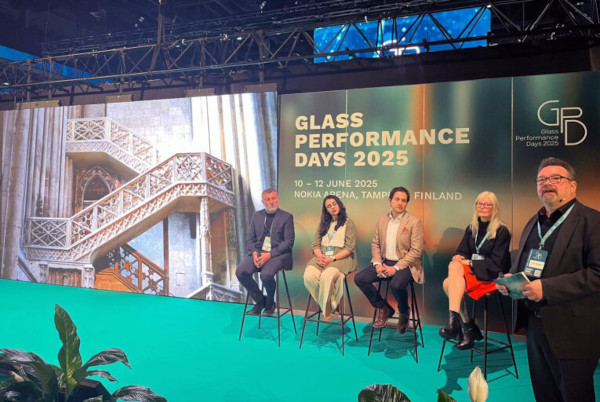GPD: Seeing the in/visible impact of glass
Jun 12,2025
925
Shining a light on glass’s in/visible impact, Glass Performance Days (GPD) 2025 kicked off yesterday in Tampere, Finland, with the conference opening at the Nokia Arena. This year’s GPD brings together about 500 participants and over 130 presentations to explore the theme of “Glass – The In/Visible Impact.” Glass is all around us, bringing often unnoticed transparency, clarity and innovation to our everyday lives. It is a material that bridges form and function while driving sustainability across the world. Miika Äppelqvist, newly appointed President and CEO of Glaston, opened the event and warmly welcomed everyone. “My first GPD was back in 2009. If I look at the past 15 years from the glass industry’s point of view, development has been tremendous. And many of you have been part of this successful journey, helping us to get where we are now,” he said. GPD has always been about three things. People and networking, knowledge and know-how, and innovations – turning ideas into something someone is willing to pay for. “GPD has always been about people,” Äppelqvist underlined. Thomas Bertin-Mourot, Director, Innovation Growth, Advanced Windows, Corning Incorporated, presented the importance of his company’s recent innovation to drive the invisible nature glass – ultra-thin glass. Although the original idea to form a thin glass fusion draw stems from the 60s for the automotive industry, it was not until 1991 that the idea of using a thin glass for thin triple pane was patented by LBNL. “And it took another 30 years to turn this idea into a real market application for architectural use once the capability existed,” he said. Ultra-thin glass is helping the industry solve critical challenges. Glass accounts for approximately 10% of a building’s surface but 50% of the energy losses. When you embed a credit-card thin glass pane into an insulated glass unit, you can significantly improve acoustic, comfort – and most importantly – energy and sustainability performance. This brings window performance up to the energy-efficiency level of wall. Corning’s fusion draw process is a key enabler of this technology. However, leveraging external partners was critical to make it affordable. In this case, Glaston was one of the believers two years ago, as well as HEGLA. “Innovation doesn’t come from one person. Engaging with different people, ideas and ecosystems is critical. GPD is a great place to understand someone else’s opinion, question experts in the field, challenge our assumptions and build networks. And someday – an innovation may come from that,” he said. Jenny B. Osuldsen, Partner at Snøhetta, a global transdisciplinary architectural firm headquartered in Norway, showcased several projects from her company that make an in/visible impact to move the world to a better place. She stressed the importance of sustainability and circularity. “The environmental crisis is all around. Material consumption is massive. We need to work with ideas and concepts to reduce it,” she said. The amount of material consumed by our global economy has passed 100 billion tons. Of this, only 8.6% is cycled back into the global economy. “We’ve built so much on the earth already. Now, we need to think how we can reuse all that we’ve built. Instead of always building something new, we should think if we can use what we already have – reusing slabs and columns – and even find a way to turn windows into new interior walls,” she urged. She feels to be prepared for the future, we need to find better, sustainable solutions. And it’s all about people. Nothing can happen if we don’t talk to each other and help each other. Marko Mökkönen, Director of Sustainability at Glaston, facilitated a panel discussion with Jenny B. Osuldsen, Maryam Heibati, Project Architect, AFRY; Saverio Pasetto, Head of Facades, Skanska; and Enrico Cutri, Global Building Projects Specification Manager, Dow. Each was asked to present an image with a special meaning for them. The recurring theme in all was looking to the past to find answers for the future. Saverio Pasetto challenged the panel: “We treat sustainability and circularity as if they are new words. They are not. Look at ancient buildings. Oftentimes, they have bricks reused from previous constructions. Buildings last not because they are perfect, but because people care about them.” To wrap up, Äppelqvist asked the audience to enjoy the next few days together – and to reflect: Glass – in/visible – or the most visible part of every memorable structure?

Source:gpd.fi
Author:shangyi
Read More


